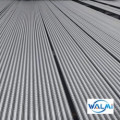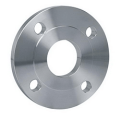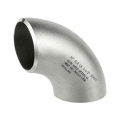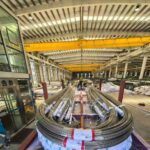Ultra-large R-angle U-shaped heat exchange tubes feature a special bend radius design in U-tube heat exchangers. Their core feature is the large curvature radius (R-angle) of the bend section. This design significantly improves the equipment’s adaptability and reliability under high-temperature, high-pressure, and wide-temperature-difference conditions. The following analysis focuses on four dimensions: structural characteristics, performance advantages, application scenarios, and manufacturing processes:
1. Structural Characteristics: The Physical Basis of the Large R-Angle Design
Bend Radius and Tubesheet Layout
The bend radius (R) of U-shaped heat exchange tubes typically meets the engineering standard of R ≥ 2 times the tube’s outer diameter. Ultra-large R-angle designs further increase this ratio. For example, in high-pressure steam heat exchange applications, the R-angle may reach 3-5 times the tube diameter. This design ensures more uniform spacing between the inner and outer tubes when the tube bundle is arranged within the shell, reducing the risk of localized deformation caused by concentrated bending stress. Tubesheet Utilization and Compact Tubing
Although a large R-angle design reduces tube density in the center of the tubesheet (due to space occupied by the bend), optimizing the tube bundle arrangement (such as a diagonal cross arrangement) can ensure thermal compensation while maintaining high heat exchange area utilization. For example, in oil refining plants, computational simulations have determined the optimal R-angle and tube spacing, keeping heat exchange area loss to less than 10%.
II. Performance Advantages: Core Capabilities for Coping with Extreme Operating Conditions
Thermal Stress Relief and Enhanced Thermal Compensation
The flexible expansion and contraction characteristics of the U-tube bundle are key to its ability to cope with temperature differences between the tube and shell. The ultra-large R-angle design further reduces the rigidity constraints of the bend, enabling the bundle to balance thermal stresses through deformation even when the temperature difference is ≥50°C, thus avoiding the weld cracking common in fixed tubesheet heat exchangers. For example, in thermal power generation condensing systems, U-tube heat exchangers can withstand dramatic fluctuations in steam pressure of 0.3-0.5 MPa and temperatures ranging from 100-350°C. Improved Erosion and Fatigue Resistance
The large R-angle design reduces sudden velocity fluctuations at the elbow, reducing the risk of erosion. Experimental data shows that when shell-side flow rates exceed 5 m/s, the elbow wear rate of conventional R-angle heat exchange tubes is over three times that of those with ultra-large R-angle designs. Furthermore, the large R-angle structure disperses thermal fatigue stress, extending the life of the tube bundle. In continuous operation scenarios in the chemical industry, the maintenance interval can be extended to over five years.
Optimized Heat Transfer Efficiency and Pressure Drop
Optimizing the R-angle and baffle spacing through fluid dynamics simulations creates uniform turbulent flow in the shell-side, enhancing heat transfer. For example, in a cigarette factory, a U-tube heat exchanger with an ultra-large R-angle design achieved a 15% improvement in heat transfer coefficient and an 8% reduction in pressure drop, while maintaining tube-side flow rates of 1-3 m/s and shell-side flow rates of 0.3-1 m/s. This resulted in an annual energy saving of 28,000 yuan. III. Application Scenario: Ideal for High Temperature, High Pressure, and Complex Media
Petrochemical Industry
Crude Oil Heating and Cooling: The U-shaped tube bundle withstands corrosive media (such as hydrogen sulfide) in crude oil, as well as high temperature and high pressure environments. Hydrogen-embrittlement-resistant materials (such as ASTM A249 stainless steel) are used in the tubes to ensure long-term stability.
Catalytic Cracking Unit: In the heat recovery system between the reactor and regenerator, the extra-large R-angle design effectively handles sudden temperature changes (ΔT ≥ 100°C), preventing thermal fatigue damage to the tube bundle.
Power Industry
Boiler Feedwater Heating: As the core component of the high-pressure heater, the U-shaped tube heat exchanger utilizes a large R-angle design to balance the high-temperature stress of the steam-water mixture and reduce the risk of leakage.
Nuclear Power Plant Secondary Circuit System: In the steam generator, the extra-large R-angle heat exchanger tubes withstand the high pressure and high temperature of radioactive media, ensuring safe operation.
Metallurgy and Pharmaceutical Industry
Steel Mill Continuous Caster Cooling: The U-shaped tube bundle quickly recovers heat from hot steel billets. The large R-angle design accommodates cooling water scaling conditions, and the entire tube bundle can be removed for cleaning, increasing maintenance efficiency by 50%. Pharmaceutical Evaporators: In vacuum and low-temperature evaporation scenarios, the extra-large R-angle design reduces material buildup and meets GMP cleanliness requirements.
IV. Manufacturing Process: Precision Control and Material Selection Are Key
Bending Technology
Cold and Hot Bending: The bending method is selected based on the characteristics of the tube. For example, titanium alloy heat exchange tubes require hot bending (heating to 600-800°C) to prevent cracking, while stainless steel tubes can be cold bent.
CNC Tube Bending Machine Application: Programmable control of the bend radius and angle ensures that the R-angle deviation of each heat exchange tube is ≤±1%, meeting engineering standards.
Tubesheet-to-Tube Connection
Strength Welding + Hydraulic Expansion: Full-depth hydraulic expansion technology is used to ensure the seal and tensile strength of the connection between the tubesheet and heat exchange tube. For example, in the Shuangxing stainless steel case, optimizing the expansion process increased the pressure resistance of the joint by 20%.
Hardness Matching Control: The tubesheet hardness should be HB20-HB30 higher than that of the heat exchange tube, or annealing can be used to reduce the hardness difference to avoid weld cracking. Nondestructive Testing and Quality Verification
Penetrant Testing and Metallographic Analysis: 100% penetrant testing is performed on welds to ensure the absence of defects such as cracks and lack of fusion. Metallographic analysis verifies the structural stability of the heat-affected zone (HAZ).
Helium Leak Test: After the tube bundle is assembled, it is pressure-tested with helium. The leak rate must be ≤1×10⁻⁹ Pa·m³/s, meeting nuclear-grade sealing requirements.
V. Selection and Maintenance Recommendations
Key Selection Factors
Temperature and Pressure Range: Determine the operating temperature (e.g., -200°C to 600°C) and design pressure (e.g., ≥10 MPa), and select the appropriate materials and structure.
Media Characteristics: If the shell-side fluid is prone to scaling (e.g., circulating water), provide cleaning ports and optimize the baffle spacing. For tube-side fluids, clean media (e.g., steam) should be preferred.
Heat Transfer Efficiency Requirement: Determine the baseline heat transfer area through calculation, and allow a 10%-15% margin for thermal resistance due to scaling. Maintenance Strategy
Regular Cleaning: Develop a cleaning schedule based on the fouling rate. For example, in the case of a cigarette factory, annual cleaning is sufficient to maintain efficiency.
Online Monitoring: Install temperature and pressure sensors to monitor the status of the tube bundle in real time, providing early warning of excessive thermal stress or leakage risks.
Spare Parts Management: For damaged inner tubes, special plugs are stocked for rapid repair.





